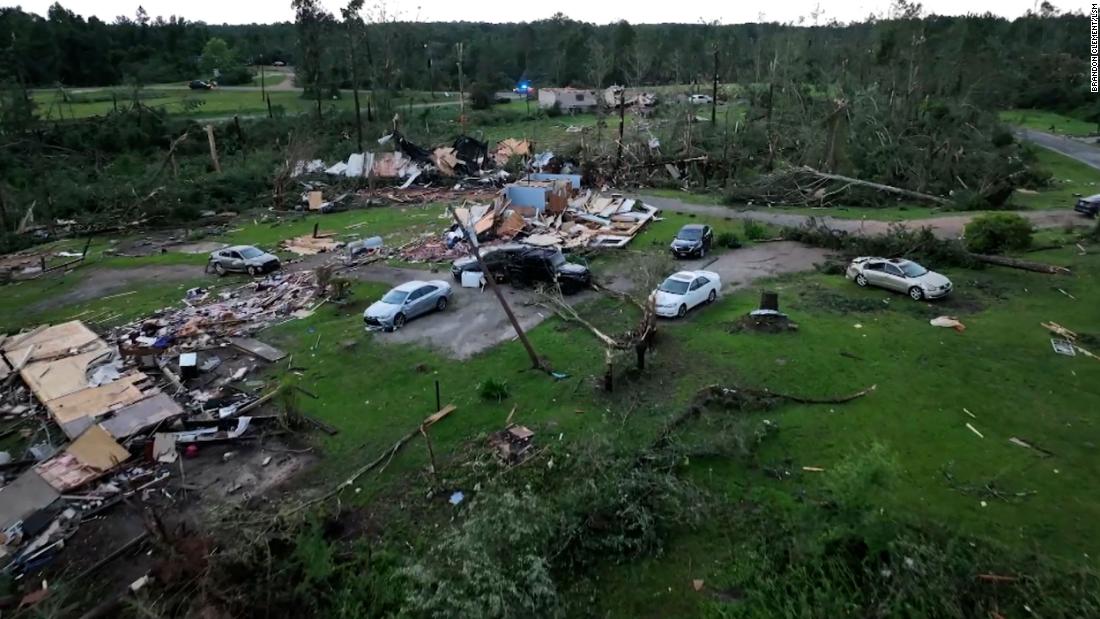- by foxnews
- 28 Nov 2024
Record heat and power outages create 'the perfect storm,' meteorologist says

Editor's Note: A version of this article originally appeared in the weekly weather newsletter, the CNN Weather Brief, which is released every Monday. You can sign up here to receive them every week and during significant storms.
People in the South are storm weary. I've heard it from friends and family in my home state of Louisiana, where storms have hit exceptionally hard, and the damage extends much further.
Six tornadoes were reported in Mississippi alone in the last 24 hours, and strong storms are still in progress right now.
Tornadoes have been reported in the South every day during the last week, and more could occur in the next few days. They have caused serious damage, several deaths, and as of this morning half a million people are in the dark, according to PowerOutage.us. Making matters worse, some are expected to be without power for much of the week, leaving them without air conditioning as temperatures reach the triple digits.
The combination of power outages and dangerous heat "made this event the perfect storm," meteorologist Michael Berry from the National Weather Service office in Shreveport said.
His region is recovering from an EF-1 tornado that hit Cass County, Texas on Friday night, along with extensive wind damage that uprooted trees and damaged power lines, littering them all over the region. He said the damage is in some ways worse than a tornado because it is so widespread.
Power crews have not been able to keep up. SWEPCO, which services Louisiana, Texas and Arkansas issued a statement late Sunday saying, "Nearly 3,000 utility professionals have now joined forces to tackle the work and rebuild communities across northwest Louisiana, east Texas and the western communities in Arkansas following the continued onslaught of extreme weather." They added, "When you have devastation at this scale, with widespread damage that includes significant impacts to both our transmission and distribution stations the prolonged effort requires time to mobilize additional resources."
Utility crews from as far away as Michigan and Indiana have come to the region to help rebuild the power grid.
According to Berry, straight-line winds Friday night approached 100 mph, which is what resulted in the damage to be so widespread, as well as causing damage to the power grid. He said it is the type of storm they typically only see once or twice a decade.
Another round of storms came through many of the same areas Saturday night, causing even more damage. Saturday's round of storms produced nearly a dozen tornadoes across the South, hail greater than three inches in diameter and widespread wind reports stretching from Kansas to the Florida Panhandle. It caused even more power outages and set back power crews from getting power restored from Friday's storms.
SWEPCO's outages account for about 30% of the power outages across the South and some could be in the dark another week or more. It creates another concern for not only this region but for all the residents without power across the South: the heat!
Heat alerts are up for roughly 35 million people across the South, with temperatures remaining in the upper 90s to triple digits but feeling much hotter when you factor in the humidity.
"Widespread high and low temperature records are forecast to be tied or broken over the coming days," the Weather Prediction Center said.
The heat index will be running anywhere from 115 across northern Louisiana and East Texas to close to 125 degrees across South Texas. The heat index is the "feels like" temperature when you factor in the humidity. It could be deadly for the hundreds of thousands without power.
"Our message quickly became how deadly the heat can become with the widespread power outages, encouraging people without power to try to stay cool by any means possible, drinking plenty of water, staying in the shade, relocating to friends or a family member's home with power and AC," Berry warned.
Many areas have opened cooling centers for those without power and in need of a place to cool off.
How to find cooling centers by state
With nighttime temperatures staying in the upper 70s to low 80s, they could be just as dangerous. Overnight is when the body needs to cool and reset, and if temperatures are staying warm overnight, we could see serious heat-related consequences as a result.
Why high overnight temperatures are so deadly
More than 50 million people are in the path of more severe weather today across the South.
A Level 2 of 5 slight risk of severe weather covers parts of the Gulf Coast from southeastern Louisiana to the East Coast of northern Florida. Areas possibly affected include New Orleans, Mobile and Jacksonville.
- by foxnews
- descember 09, 2016
Mom's message in a bottle found by her own daughter 26 years later
A fourth grader went on a school trip when someone found a message in a bottle containing a letter that was written by her mom 26 years ago. The message was tossed into the Great Lakes.
read more


